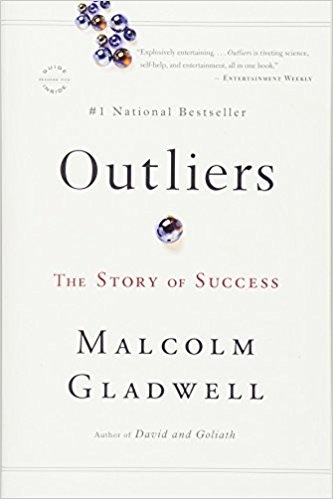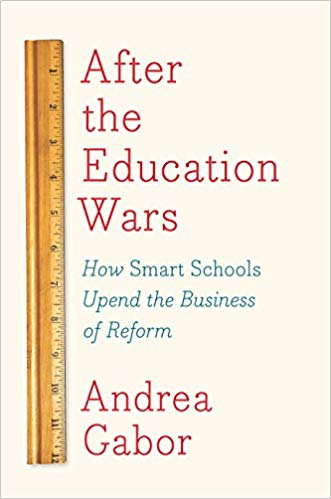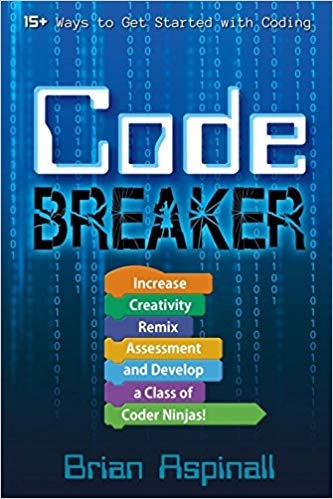Author Archive
Thursday, November 22nd, 2018
Outliers: The Story of Success (©2008, Little Brown: New York, NY) is Malcolm Gladwell’s third mega best seller after The Tipping Point and Blink, both of which are summarized here. Gladwell looks at many notable situations where people or populations stand out from the crowd. He finds that circumstances and effort are more important than talent. There are many lessons here for educators and parents.
The Secret of Roseto
- Roseto is a town in Pennsylvania populated by immigrants from a village in Italy. Although the residents do not have a healthy diet or lifestyle, they do have a very low incidence of heart disease. The entire town is an outlier in this respect. After a great deal of study, it was determined that it was the supportive town culture that helps keep the residents so healthy.
The Importance of Birthdays
- A study of birthdays for stars in hockey, baseball, and soccer shows that players born earlier in the year are more likely to stand out and qualify for better coaching and more playing time. At a young age there is a significant advantage to being born earlier in the year of eligibility. In preadolescence, a twelve-month gap in age represents an enormous difference in physical and mental maturity.
- The birth order effect also operates in schools where the older students in a grade level tend to do better and get placed in higher ability groups. Older children scored up to 12 percentile points higher on the Trends in International Mathematics and Science Study (TIMSS). Teachers seem to sometimes confuse maturity with ability. Schools could put all the students born in the first quarter of the year in the same class and do the same with children born in other parts of the year of eligibility. As it is, many educated parents hold their kids back to insure that they will be older than their classmates which gives them a better chance in education and school sports that are based on grade level rather than age.
Time Trumps Talent-What Really Made the Beatles Great
- Psychological studies have demonstrated that all great artists and people with great expertise got there only after putting in at least 10,000 hours of effort or practice. Even Mozart didn’t make great music until he hit this number at the age of 21. It takes the brain this long to assimilate all that it needs to know to achieve true mastery.
- A club owner from Hamburg went to London looking for bands to play in this club. By pure chance he met an agent from Liverpool who booked the Beatles in his club. Unlike English gigs which seldom lasted more than an hour, the club had the Beatles play for five hours or more a night. All told they performed 270 nights in just over a year and a half. By 1964 they had performed about 1200 times. They were no good on stage when they went to Hamburg and they were very good when they came back.
Tags: Bill Gates, Malcolm Gladwell, Outliers, The Beatles
Posted in Book Summaries, Business Books, Education Books, Leadership Books | Comments Off on Outliers: Gladwell’s 3rd Mega Hit – Revised Summary
Monday, November 19th, 2018
After the Education Wars: How Smart Schools Upend the Business of Reform by Andrea Gabor uses examples of successful and failing schools to demonstrate how the principles promoted by W. Edwards Deming can lead to school improvement. She provides extended histories of reforms in New York City, Massachusetts, Texas, and New Orleans to show how democratic grassroots reforms are more likely to work than the top-down approaches used in most states and cities. Everyone with the power to impact school reform needs to read this.
Introduction: The Quiet Revolution
- Andrea starts by reviewing the work of W. Edwards Deming and how he helped Japanese and then American companies modernize and improve. He found the blame to lie with top management and the answers to come from bottom-up reforms as employees closest to problems were in the best position to solve them. Unfortunately, the corporate-reform industry that has gained ever-increasing influence on how American schools educate children has largely ignored the strategies they used to improve production as they tinker with school reform.
- Business reformers came to the education table with belief in market competition and quantitative measures. Expertise from corporate boardrooms is favored over experience gleaned in classrooms. They also distrust of the education culture. It also came with arrogance, suspicion, and even hatred of organized labor. What is needed, however, is democratic collaboration, iterative improvement, and grassroots participation that is protected from bureaucratic meddling. We should value data as we understand its limits.
- Schools have different goals and cultures than businesses. This makes them less suited to being run like businesses. Three decades of top-down, corporate-style education reforms have proven deeply unpopular and have reaped few benefits. The number of bad teachers is also overestimated by reformers, but efforts to punish low performers has lowered morale and increased turnover. Other business practices like incentive pay have also had a negative impact. The only winners have been the testing and technology industries at the expense of a narrowed curriculum. This book will reveal what has worked, which should guide the next reform effort.
1. Big Dreams, Small Schools, How Entrepreneurial Rebels Built a Movement in New York City
- This chapter takes us through some history of New York City Schools from the 1960’s to relatively recently. It tells of how a number of schools gained success by being small and at the same time allowing teachers to pretty much run the schools. In a sense, they used Deming’s grass-roots ideas to interest students in the learning and act as role models. They shunned standardized testing and looked at other performance indicators. A sense of creative non-compliance pervaded these schools as they bent the rules and looked for cracks in the system. Classrooms were more open and curricula less fixed. There was lots of learning by doing, art, music, and field trips.
A new generation of educational leaders arrived who had no experience teaching. Rather than learn Deming’s principles like industry, they instituted top-down reforms. Even though they saw the success of small schools, they missed the rest of the factors that lead to success. This also included those involved with funding like the Gates Foundation. Unfortunately, the De Blasio administration has increased bureaucracy and shunned the flat organization models of successful schools.
Posted in Book Summaries, Education Books, Leadership Books | Comments Off on After the Education Wars: How Smart Schools Upend the Business of Reform by Andrea Gabor
Friday, October 26th, 2018

Photo Credit Pixbay.Com.
All Children, Including Those with Learning Disabilities, Benefit from the Arts by Lillian Brooks explains how all children can benefit from increased exposure to the arts. This article also contains a number of links to first-rate resources to help parents and educators bring more of the arts to homes and classrooms.
Introduction
- Kids with learning disabilities often struggle with reading, writing, and math — their frustrations lead to feelings of inadequacy and defeat. Educators continually develop new methods and technologies to help their students master literacy and math skills, but the arts also play a very important role in helping kids learn and grow.
- Drawing, painting, music, dance, crafts, and textile arts require complex thinking and problem-solving. Artistic activities build confidence and self-expression. Tools such as a paintbrush, sewing machine, guitar, or yarn allow kids to express themselves while providing innumerable chances to learn, practice, and master new skills.
Learning Styles
- You know your child’s strengths, interests, and learning styles. And let’s face it: learning isn’t a one-size-fits-all proposition, so it’s important to know what works. Visual learners use charts, graphs, pictures to visualize relationships between ideas and concepts. These learners do well with the visual arts. However, it’s all about sound with auditory learners; they pick up knowledge by listening rather than learning through reading or visual displays. These kids love creating and listening to music.
- Young authors and readers, meanwhile, love to interact with texts, employing writing and reading to work things out. Knowledge springs to life through words, rather than images or sound. Kids who learn by doing are all about hands-on, experiential learning. These perpetual motion kids thrive in drama, dance, and crafts.
Invite Your Child to Explore the Arts
- While your student’s school probably uses a combination of technology, occupational therapy, classroom modifications, lesson adaptations and differentiation, multi-sensory teaching methods, and more to help students with learning disabilities to succeed, you can also foster a love of learning at home while also building up your child’s self-confidence.
Learn Through Art
- Bring the arts into your home. Create a hobby room or space in a spare room. Visit art museums, go to the theater, or sign him up for music or dance lessons.
- Drawing and painting teach about shapes, contracts, boundaries, spatial relationships, size, and other mathematical concepts. Break processes into small steps. Use YouTube to find drawing or painting tutorials for you and your children to try together. If your child also has ADD/ADHD, mix up the drawing or painting with time to get up and work the wiggles out.
- Crafting allows kids to explore concepts, explore their ideas in two and three-dimensional ways, troubleshoot, and problem-solve. Create a hobby room or space stocked with supplies such as clay, chalk, paper, scissors, glue, and other items, then let your child channel her inner Picasso. If you like to sew, help your child create his own project, like a patchwork pillow for his bed or a simple new dress for her doll. Experts say that while kids can learn to sew any time, age 6 and 9 is the “sweet spot.” If you need help getting started, there are online guides to help you out.
Museums and More
- Take your child to an art museum. Many museums also include galleries that invite children to interact with the art. Talk about the art, bring along sketchbooks and pencils, and try to recreate or draw inspiration from your favorite pictures.
- Music teaches kids about rhythm, sound, pitch—great for improving phoneme recognition for reading or using repetitive, rhythmic and mnemonic songs to memorize academic facts more easily. Studies show that music helps with language skills, improves literacy, and even boosts a person’s IQ! Take your little person to hear an orchestra—many communities feature musical programming specifically targeted for kids and families.
- Dancing develops motor control, counting, and directionality, which experts say, help kids better grasp reading and writing concepts. Experts say that less-verbal children can more easily express their opinions, emotions, and feelings through dance.
Get Them to the Stage and On Stage
- Play-acting and theater allow kids to put themselves in someone else’s shoes, give them ownership of what they’re learning, and a way to express that knowledge. Take your children to the theater. Experts agree that theater “stimulates creative imagination. It doesn’t have to be Broadway; many local colleges have excellent (and less expensive) theater programs.
- Use the arts to nurture your child’s strengths, grow curiosity, and cultivate a lifelong learner. The arts include a diverse world of learning styles and creative expression and often create a more level playing field for kids who learn equally well — just differently.
Lillian Brooks
- Lillian is the founder of learningdissabilities.info. For years, Lillian worked as a special education teacher with a focus on teaching children with learning disabilities. She created learningdissabilities.info to offer information and understanding to parents of children with learning disabilities, as well as adults who are in need of continued support in order to succeed. She is located in Baltimore, Maryland.
Posted in Guest Posts | Comments Off on All Children, Including Those with Learning Disabilities, Benefit from the Arts by Lillian Brooks
Tuesday, October 16th, 2018
Code Breaker: Increase Creativity, Remix Assessment, and Develop a Class of Coder Ninjas! by Brian Aspinall shares his experiences and those of some colleagues in the process of teaching coding from kindergarten to high school. It deals with computational thinking which is a fundamental skill at the heart of engineering and mathematics. It includes coding and much more, and can even happen without technology. Make sure your school has a few copies.
Preface
- We live in an era of access as answers to knowledge-based questions can be quickly retrieved. As for coding, we have been teaching that in many forms since the 1960s. Like many, Brian is a self-taught coder. He offers ten reasons for teaching coding. They include building self-confidence, allowing students to create, self-expression, teaching storytelling, opportunities for risk-taking, reinforcing math principles, and teaching problem-solving. It is required for many future jobs, developing teamwork, and helping humanity.
1. The Clarity of Poop
2. A Wing and a Papert
- Here we get some learning theory. Assimilation happens when you incorporate new things into your current understanding. Accommodation happens when you learn new things and have to change what you currently understand. People learn best when they are involved in making or constructing things in the real world. To do this you need some control over your own learning. Learning should be concrete and computers are a good way to teach this. Computational thinking is a fundamental skill and it is at the heart of engineering and mathematics.
- Coding Rock, Paper, Scissors to Teach Probability
- Indigenous Trail: Trees and Coding a Micro:Bit Compass
- What Is Computational Thinking? Computational Thinking can take on a variety of forms.
Posted in Book Summaries, Education Books, Leadership Books | Comments Off on Code Breaker: Increase Creativity, Remix Assessment, and Develop a Class of Coder Ninjas! by Brian Aspinall
Saturday, October 6th, 2018

Seven Things That Can Spoil Your Relationship with the Students by Kate Khom offers excellent advice to all teachers regardless of their experience. It also provides guidelines for administrators who have to observe and guide teachers.
Introduction
- Your most important job as a teacher is to create appropriate and pleasant conditions in which learning can take place while maintaining a good, stable relationship with your students. Your relationship with the students largely depends on your personality, attitude, and intentions. No teacher is ever identical to another teacher, just like every student is an individual. Teaching is certainly not an easy job, and it takes effort, time and experience to get better at it. However, there are certain things that you should always avoid doing in order not to spoil your relationship with the students.
1. Being Cold and Distant
- While it’s certainly important that you maintain your authority over the class, you should never allow yourself to become one of those cold and distant teachers that the students are scared of or uncomfortable around. If you act this way you will never be able to establish a good rapport with the students and you will surely hinder their learning because they simply will not feel comfortable enough in the classroom.
2. Unwillingness to Elicit and Accept Honest Feedback
- Sometimes, while teaching, we can unknowingly do certain things that can bother our students. Maybe you’re talking too quickly or using complicated language. Natalie Schwartz, a renowned author of multiple books on teaching, explains how to deal with this in her her article. “Eliciting feedback can entail asking a simple question such as, So how was the homework last night?” All in all, you have to elicit and accept feedback without getting angry or offended when you get it.
3. Being Too Friendly
- You absolutely should have a positive attitude towards your students and you should strive to create a pleasant learning environment in the classroom, but there is a difference between being a good teacher and being their friend. Make sure that they still remember that you are the teacher and that they have to listen to you.
4. Being Hypocritical
- There is always that teacher that strictly forbids students from using their phone in class, but when their phone rings, they pick up the call and chatter away, simply because they are the teacher and that ‘’gives them the right’’ to do something they don’t allow students to do. If teachers establish certain rules in class, then they need to remember that the rules have to apply to them too.
5. Humiliating students
- This one should go without saying, but you should absolutely never humiliate your students in any way. Melissa Kelly, a writer at ThoughtCo. says in her article that, if humiliated: ‘’The students will either feel so cowed that they will never feel confident in your classroom, so hurt that they will not trust you ever again, or so upset that they can turn to disruptive methods of retaliation.’’
6. Flying With the Fastest
- If you only pay attention to the students that speak first, you will definitely get a wrong impression about how easy or difficult the lesson is. Not everyone can learn at the same speed and by only paying attention to the best students, you will lose track of the rest of the class, which will make them feel inadequate and they won’t really understand the lesson. John Marks, an expert in classroom management from says that you should ‘’Try directing questions at individuals and sometimes actively ‘shh’ the loud ones, or simply not hear them.’’
7. Unwillingness to Repeat or Explain
- As Derrick Meador, a writer at ThoughtCo.claims in his article on teaching, ‘’You should never say things like: ’’I’ve already gone over that. You should have been listening.”Make sure that the students know that it’s safe to ask you about anything they find difficult or confusing. It is like R. J. Odora points out in his research study on using explanation as a teaching method “In the context of education, good explanation in teaching is essential for unlocking the students’ understanding of the subject.’’
Conclusion
- To conclude, as teachers grow in experience, their teaching improves, but until then, it is crucial that they learn to maintain a good relationship with the students. Hopefully, this article will help teachers understand what to pay attention to in their behavior and attitude towards the students so that everyone is happy and all the conditions for learning are met.
Kate Khom
- Kate is passionate writer and learner located in Kyiv, Ukraine. She likes to help people and make this world better. Feel free to chat with her on Twitter or check her website .
Posted in What can Dr. Doug do for you? | Comments Off on Seven Things That Can Spoil Your Relationship with the Students by Kate Khom










